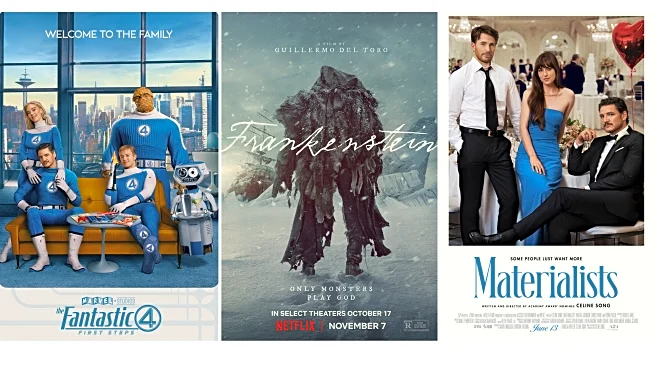What's Happening?
Netflix is set to release a new version of Frankenstein, featuring a unique creature design by Mike Hill, a sculptor and special effects artist. Hill's collaboration with director Guillermo del Toro began
years ago when del Toro commissioned Hill to create a sculpture of Boris Karloff in his iconic Frankenstein makeup. This partnership has led to Hill designing creatures for several of del Toro's films, including Nightmare Alley and The Shape of Water. The new Frankenstein design aims to offer a fresh take on the classic monster, avoiding heavy stitching and focusing on a more human-like appearance. The film, starring Jacob Elordi as the creature, will be available for streaming on Netflix starting November 7th.
Why It's Important?
The release of a new Frankenstein film with a distinctive creature design is significant for the entertainment industry, as it showcases the creative collaboration between renowned artists and filmmakers. This project highlights the importance of innovation in reimagining classic characters, which can attract new audiences and reinvigorate interest in timeless stories. The film's unique approach to the creature's design, blending beauty and horror, may set a new standard for future adaptations of classic literature. Additionally, the involvement of Netflix in distributing the film underscores the platform's role in bringing diverse and creative content to a global audience.
What's Next?
Following the film's release, audiences and critics will likely evaluate the success of the new creature design and its impact on the overall narrative. The film's reception could influence future collaborations between Hill and del Toro, as well as Netflix's investment in similar projects. The adaptation may also spark discussions on the portrayal of classic monsters in modern cinema, potentially leading to more innovative approaches in the genre.
Beyond the Headlines
The film's design process, which involved researching 18th-century surgery techniques, reflects a deeper exploration of historical and scientific themes within the narrative. This approach may encourage viewers to consider the ethical implications of scientific experimentation, a central theme in Mary Shelley's original novel. The film's emphasis on the creature's transformation over time also invites reflection on themes of identity and self-discovery.












